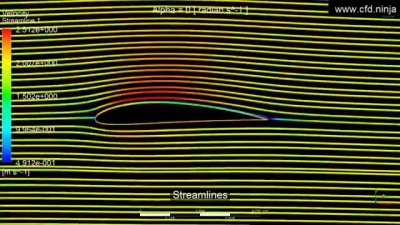Difference between revisions of "Faris Muhammad Jihad - 1706064372"
| Line 19: | Line 19: | ||
[[File:Airfoil_simulation.jpg|400px|Image: 400 pixels]] | [[File:Airfoil_simulation.jpg|400px|Image: 400 pixels]] | ||
| + | |||
| + | '''CFD Application Tasks''' | ||
| + | |||
| + | CHAPTER 3 TURBULENCE MODELLING - QUIZ 1 (Example 3.5): | ||
| + | [https://youtu.be/3kd8UuYCEdk] | ||
| + | |||
| + | CHAPTER 4 FINITE VOLUME METHOD FOR DIFFUSION PROBLEMS Simulation Assignment (Example 4.2 and 4.3): | ||
| + | [https://www.youtube.com/watch?v=AbvN-jlnxjU] | ||
== Final Task Synopsis == | == Final Task Synopsis == | ||
Revision as of 15:35, 3 December 2020
Profile
Name: Faris Muhammad Jihad
NPM: 1706064372
Study Summary
CFD Application intro
CFD Application, or more commonly referred to as Computational Fluid Dynamics is the branch of fluid mechanics that utilize numerical methods and data structures to simulate, analyze, and find solutions for fluid flow applications. Aside for the fundamentals of mathematics and physics, CFD requires the pre-requisites of programming, numerical methods, statistics & data, and fluid systems.
The latest development of CFD Application in the academic and industrial level implements this subject with softwares for simulation and data analysis. Amongst those softwares that is used in the CFD Application course in Mechanical Engineering University of Indonesia are CFDSOF and OpenModelica. Along with the usage of other softwares such as CAD from Solidworks or Autodesk Inventor in order to visually create the external environment of the fluid flow simulation.
This course is of importance for students heading towards many mechanical engineering branches since it is used in all industries that deal with thermo-fluid applications. Such as in the aerospace industry, automotive industry, manufacturing, and so on. Amongst those applications could be simulations for determining input of raw materials into a certain machine to optimize for efficiency, simulations for determining the airfoil of an airplane wing, and more.
CFD Application Tasks
CHAPTER 3 TURBULENCE MODELLING - QUIZ 1 (Example 3.5): [1]
CHAPTER 4 FINITE VOLUME METHOD FOR DIFFUSION PROBLEMS Simulation Assignment (Example 4.2 and 4.3): [2]

